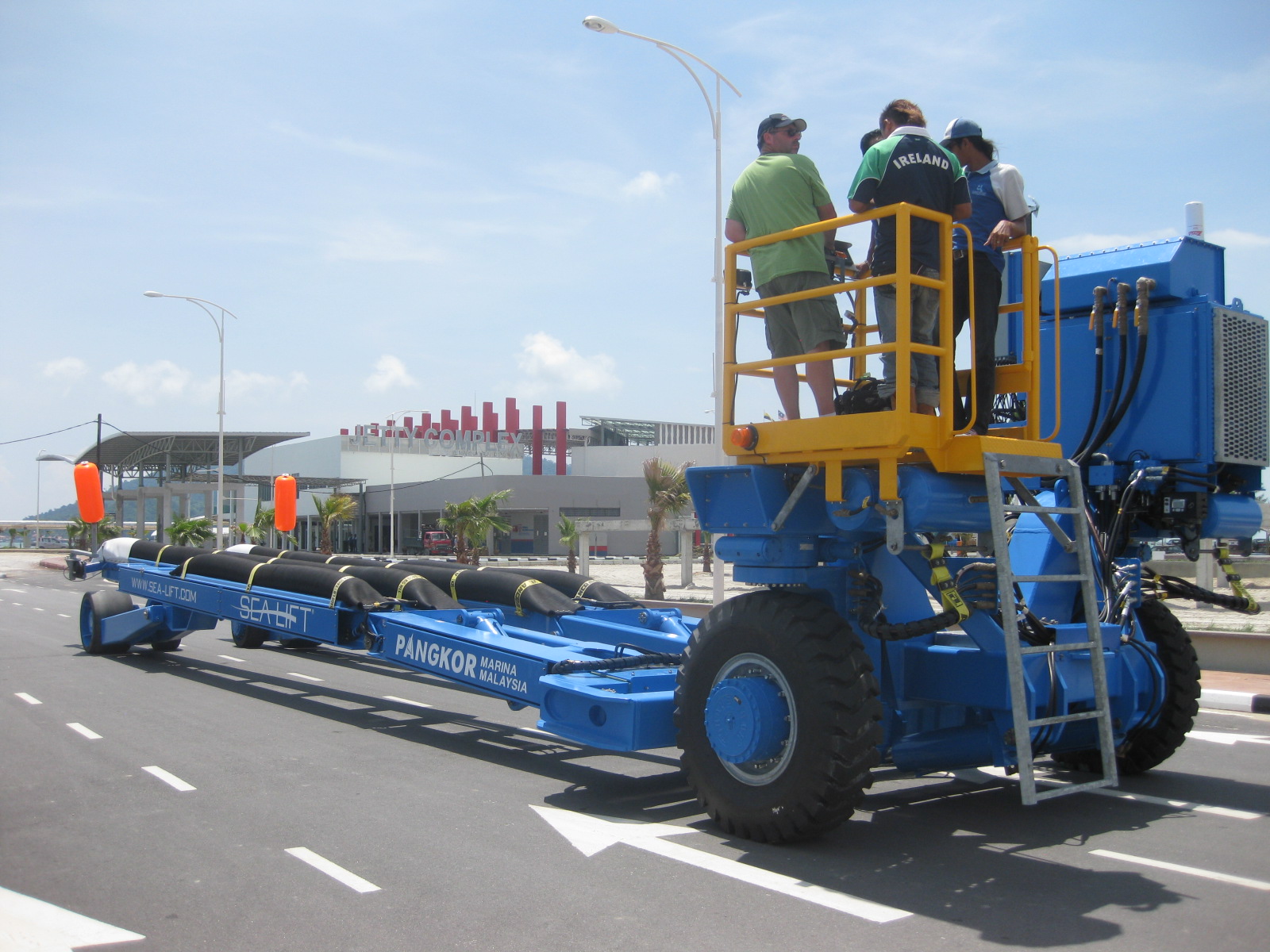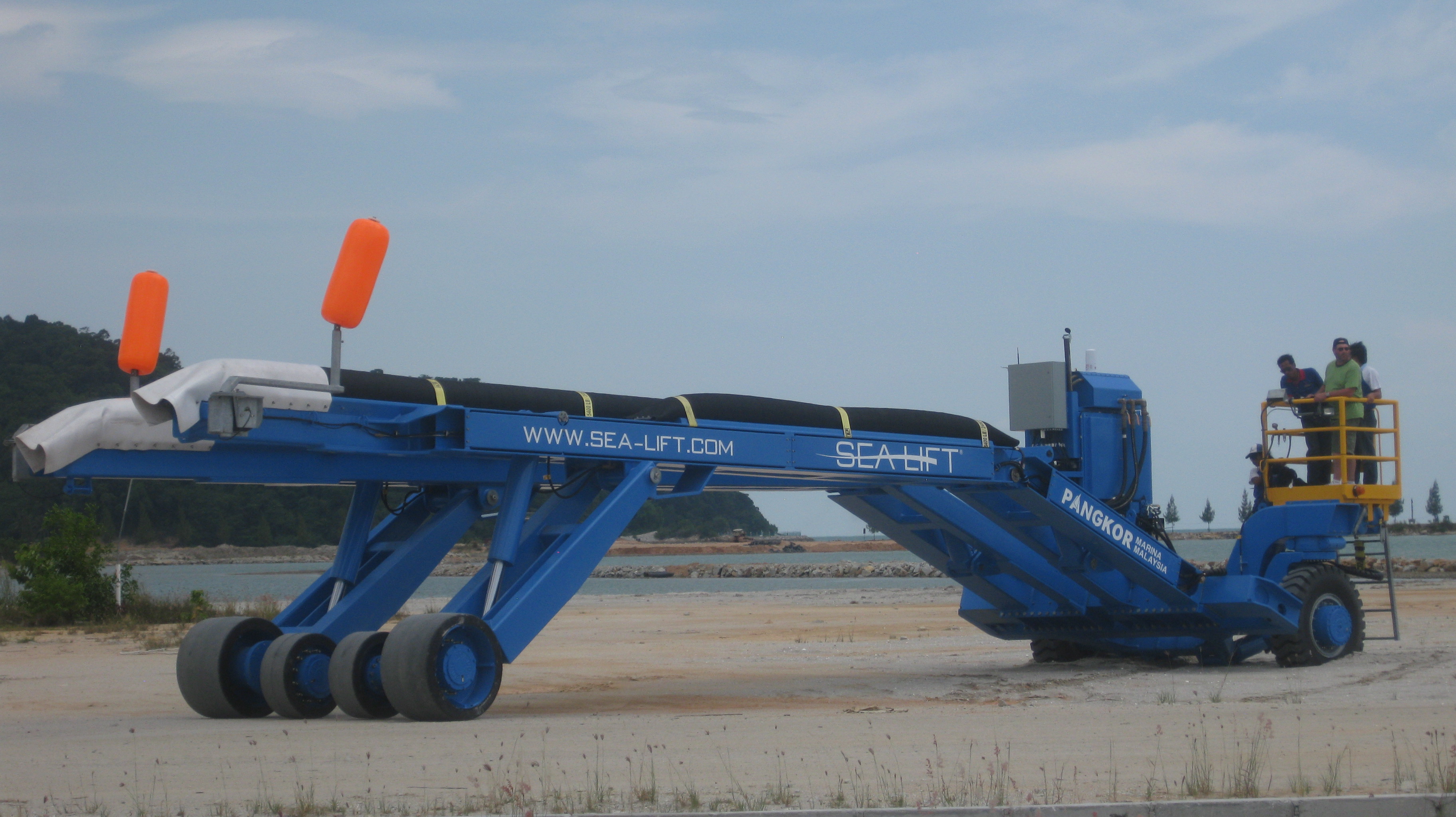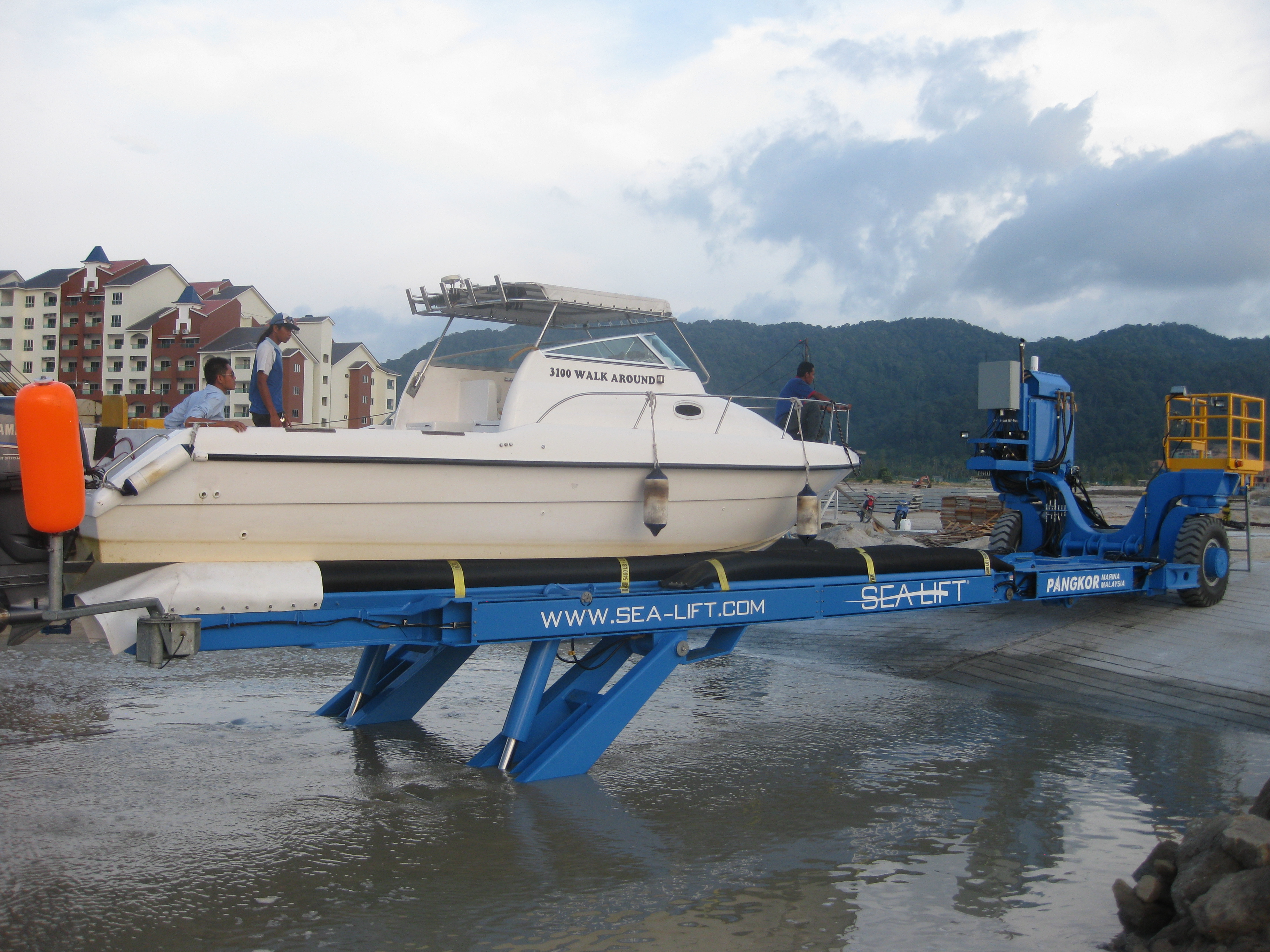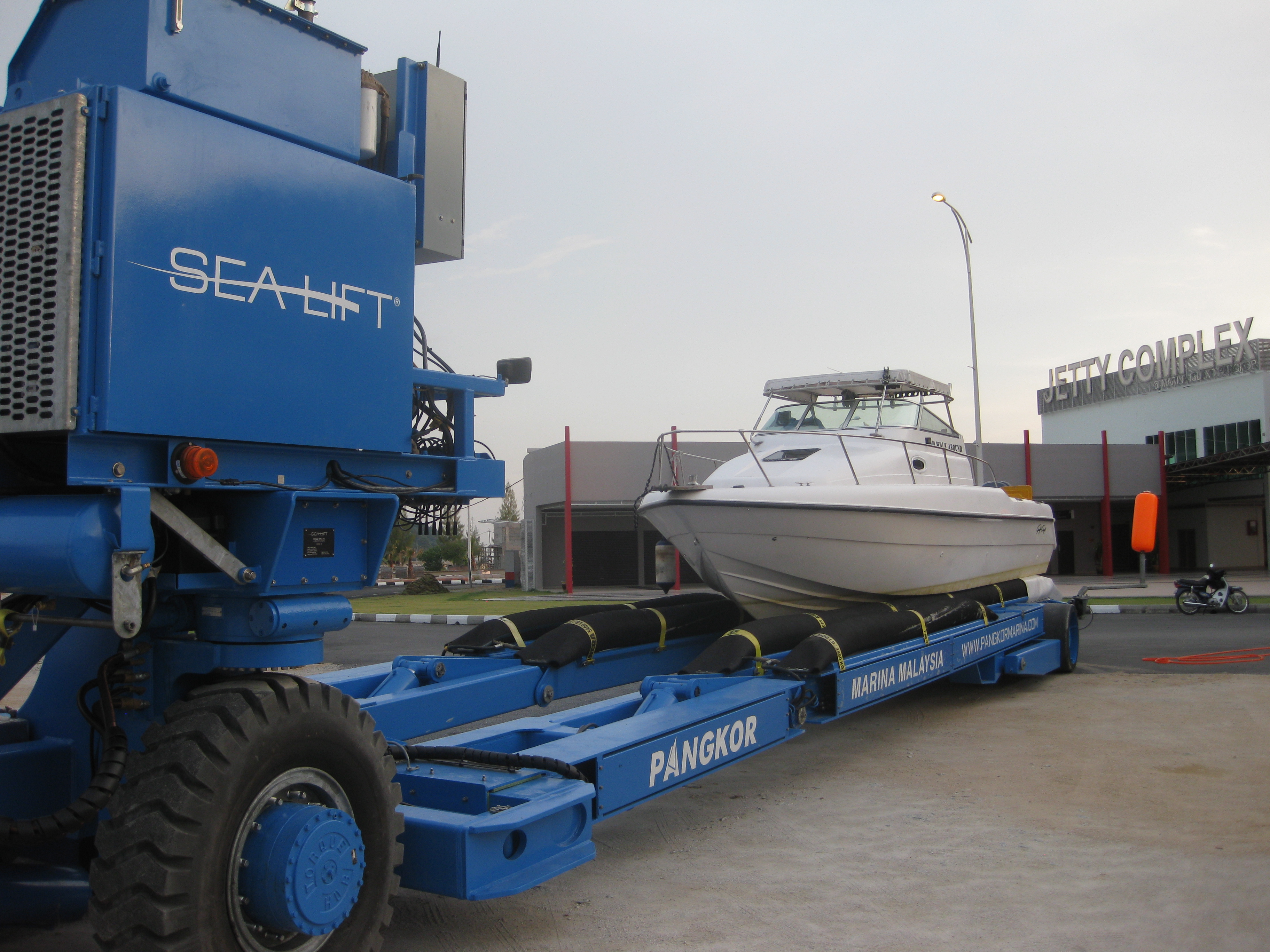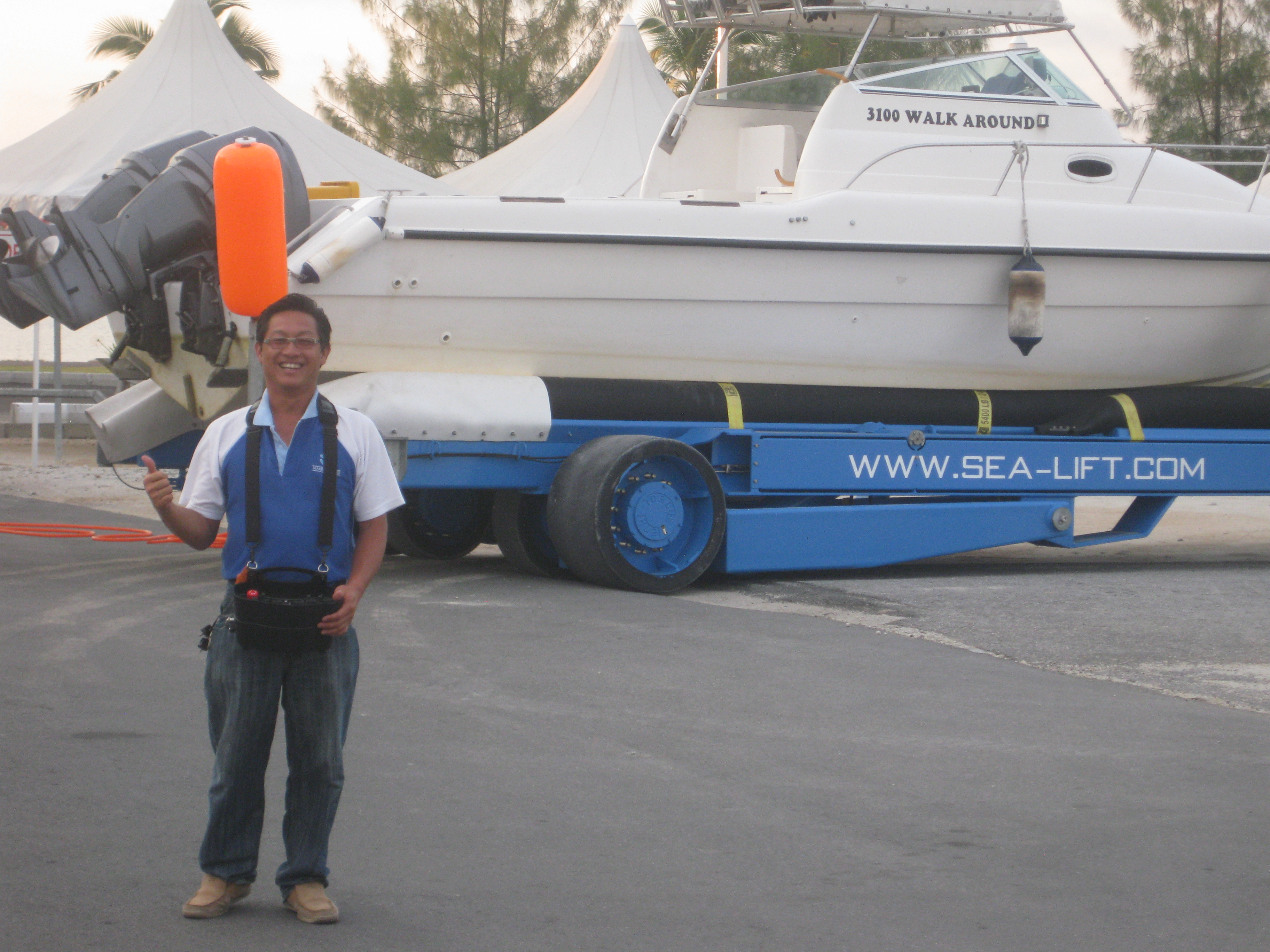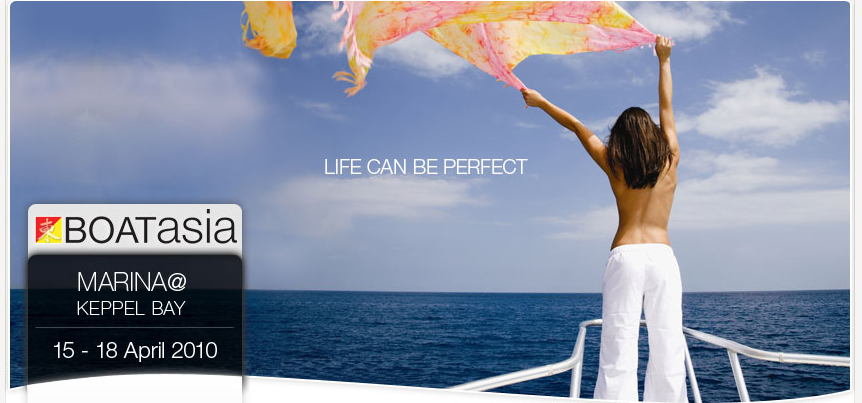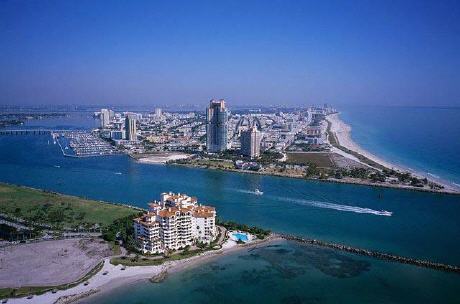Showing 1-5 of 42 total entries.
In the April 2010 issue of Marina Dock Age an article written by Jerome A. Koncel was published titled "Factors to consider in selecting boatyard/lift equipment".
You may click here to read the original article from Marina Dock Age online or continue on for the text only version below.
--------------------------------
Although marina and boatyard operators have the same objective for their boatyard/lift equipment, i.e., providing a location for storing boats, selecting equipment for transferring boats to and from the water, or moving them into boatyards, can vary depending on the location of the facility, the boat market it serves, and its business model.
Jason Johnson, a sales engineer for Marine Travelift Inc. in Sturgeon Bay, Wis., said that marinas should first and foremost consider their business location when deciding which piece of equipment to purchase for boat hauling operations. Marinas should know their tidal fluctuations, volume or frequency of hauling, along with the size and configurations of boats. These are the main factors marinas should consider but the only ones because all marinas are different.
One of the most important factors marinas should consider is the versatility of the machine and its safe operations in handling boats. In selecting equipment, marinas and boatyard service operators need to eliminate any guesswork needed to haul boats in and out of the water and around the yard.
Equipment specs
Within the marina industry, the primary method for handling boats is mobile boat hoists. From boatyards to marinas, at boat manufacturing facilities, and in some of the largest boat service yards and shipyards in the country, these lifts have become a common sight along the waterfront.
Suppliers categorize mobile boat hoists, like the majority of boat handling equipment, by the capacity or amount of weight the machine can safely support. In selecting this equipment, marinas should also do the same. Because most boatyard/lift equipment is not customized, operators need to select the equipment that is most appropriate for the boats both now and in the future. When it comes to tonnage, marinas and boatyard operators must know their boats.
In working with marinas/boatyards to determine lift equipment, Dwight Stimson, chief operating officer of Hostar Marine Transport Corp Inc. in Wareham, Mass., noted that suppliers will always ask questions before recommending equipment. What type of boats are you going to move: powerboats, sailboats, or a combination? Are you moving them to an area for storage or for work?
Wade Koning, sales manager for KMI Sea-Lift in Bellingham, Wash., added that it's also critical for the suppliers to know the facility's business model. What type of boats are they servicing? What size boats, i.e., length and width? Are you simply storing boats? Hauling boats in and out of the water?
Because operators of this equipment are handling the most prized possession of boaters, they must be properly trained and in some cases, certified.
An example of the latest features offered by boat hoist manufactures is wireless remote control. This option has become one of the most widely selected and appreciated options among boat hoist operators. It gives the operator the flexibility to step back away from the machine for a complete view of the lifting operation. This cannot only save time, but more importantly it promotes safety. This is particularly important because this type of is normally used for heavy boats and yachts.
For facilities with existing launching piers or a hoist well, the supplier can manufacture the machine width to properly fit the piers. Adequate tire clearance is important to ensure operation space for the machine. However, too much clearance can lead to challenges in raising and lowering the hoist blocks.
To handle a variety of boats, manufacturers offer an hydraulic sling adjustment, which adjusts the distance between slings. The length of the vessel, hull configuration, and appendages, such as running gear and transducers, can dictate where the slings are placed for lifting. In addition, the sling placement plans an important role in centralizing the load (weight) within the machine for safe handling.
Long-term investment
Most marina and boatyards view their yard equipment and boatlifts as major capital expenditures that will have to be amortized over the lifetime of the equipment. The selection, in this regard, is two-fold, according to Koning.
"Are you going to use this equipment to do the same thing, only trying to make it operate more effectively and efficiently?" Koning asked. For example, is the marina using equipment to lift boats out of the water and store them for the winter? If this is the case, then the marina/boatyard needs to consider buying equipment based primarily on costs, reliability, and longevity.
The second part of the decision-making process asks whether this new piece of equipment gives the marina/boatyard an opportunity to provide more services and increase its revenue stream. For example, is the yard looking to store more boats a limited amount of space? In the case of marinas facing hurricanes, is the marina looking to pack in boats during a storm? And another example: is the marina/boatyard telling its customers that it can have their boats ready within an hour after calling the yard.
if this is the case, then marinas and boatyards need to consider the equipment's capabilities. Can it perform the functions needed to increase revenues, and how quickly will it recoup the money invested so that the marina can start earning additional revenue?
Forklifts
In the dry storage industry, straddle lifts and hydraulic trailers are the most frequently seen equipment, but the conventional negative forklift is becoming another option that marinas should consider in moving boats.
Mike Wiggins, president of Wiggins Lift Co., notes these forklifts have several advantages. "The forklift can give the operator the ability to operate in a narrow roadbed and raise the boat above the vessels on either side and lower it between them with only a few inches of clearance," he said.
When asked which factors were the most crucial in selecting the right piece of moving equipment, Wiggins reiterated what other had said, "It's the size of the craft and where it is to be placed that are paramount in making the right decision," Wiggins said.
Networking
As with the selection of any piece of equipment, it's important for marina managers and boatyard operators to learn from the experiences of others. That is why it's so important for marina managers to talk with their peers and get their opinions as to which type of equipment they prefer. And don't forget research. "Selecting and designing the piece of equipment that will perfectly meet a marina's or boatyard's specific application requires considerable research," Wiggins noted, "and marinas should not overlook this important step."
Johnson added that while nearly all suppliers offer general guidelines to help marinas/boatyards in selecting equipment, not all equipment will meet every aspect of the marina/boatyard's business. "Choose equipment that meets 85 percent of your business," Johnson said. "The remaining 15 percent of the market can cost you more in equipment that the first 85."
Koncel, J. A. (2010, April). Factors to consider in selecting boatyard/lift equipment. Marina Dock Age. 23(3), 38.
The first Sea-Lift in South East Asia has been commissioned at Marina Island Pangkor in the state of Perak, Malaysia.
James Khoo, Director of Marina Island Pangkor, displays his satisfaction with his new Model 45 Sea-Lift.
Recently a Model 45 Sea-Lift was commissioned at Gold Coast Marine Centre in Coomera, Australia. This is the first Sea-Lift in operation in the Southern Hemisphere, with additional orders secured for the Australasia region.

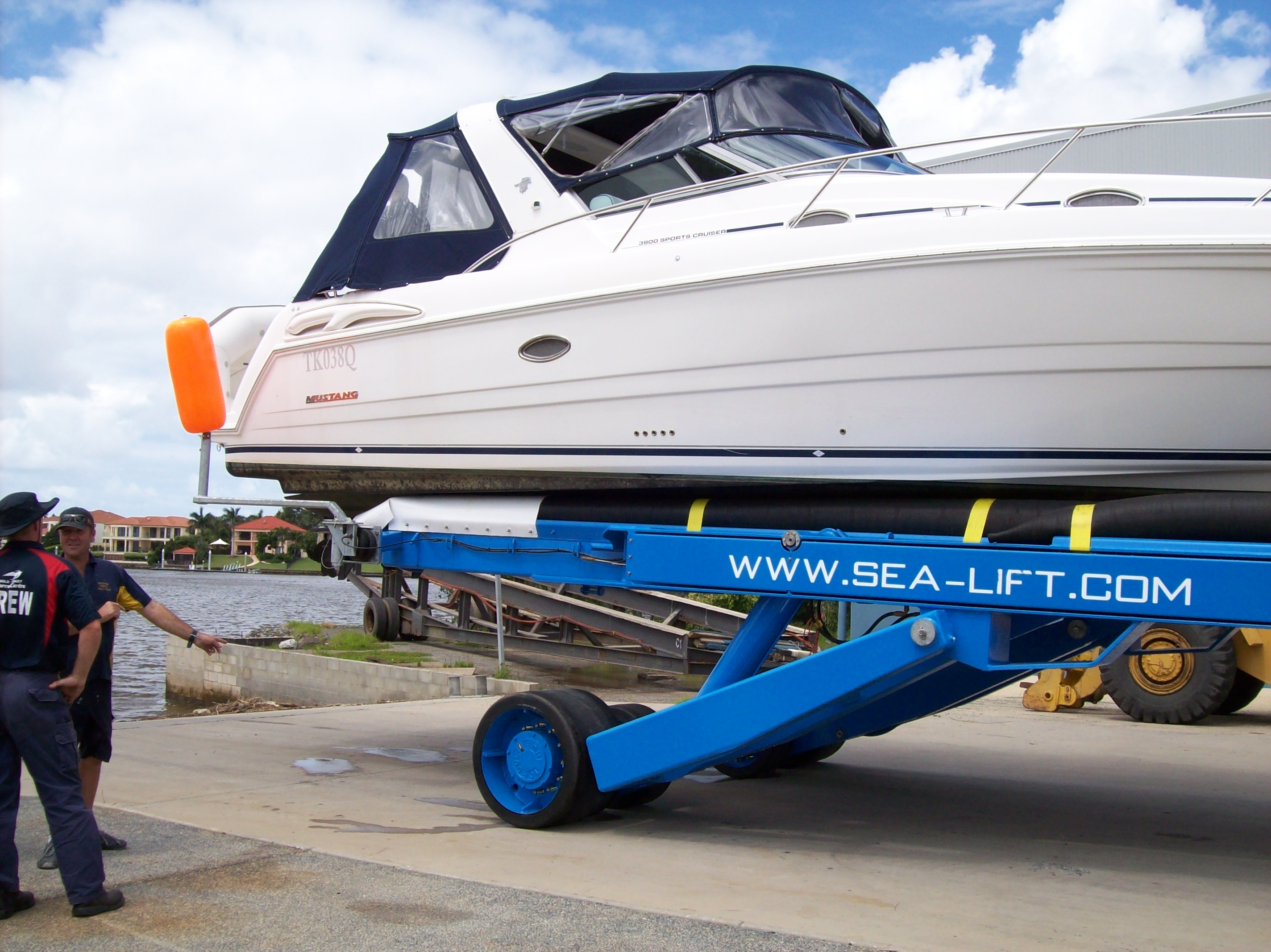
 Subscribe to RSS
Subscribe to RSS
| C A L E N D A R |
| « | September 2024 | » | ||||
| Sun | Mon | Tue | Wed | Thu | Fri | Sat |
| 1 | 2 | 3 | 4 | 5 | 6 | 7 |
| 8 | 9 | 10 | 11 | 12 | 13 | 14 |
| 15 | 16 | 17 | 18 | 19 | 20 | 21 |
| 22 | 23 | 24 | 25 | 26 | 27 | 28 |
| 29 | 30 | |||||
| A R C H I V E |
| » All Entries (112) |
| » April 2010 (2) |
| » March 2010 (1) |
| » February 2010 (4) |
| » January 2010 (7) |
| » November 2009 (5) |
| » October 2009 (5) |
| » September 2009 (13) |
| » June 2009 (4) |
| » May 2009 (4) |
| » February 2009 (4) |
| » January 2009 (7) |
| » September 2008 (13) |
| » July 2008 (1) |
| » June 2008 (4) |
| » May 2008 (4) |
| » February 2008 (4) |
| » January 2008 (7) |
| » November 2007 (5) |
| » October 2007 (5) |
| » September 2007 (13) |
| S E A R C H |
| » View All |
| General |
| Haul Out |
| Blocking |
| Shipping |
| Conferences |
| Media |
.JPG)
